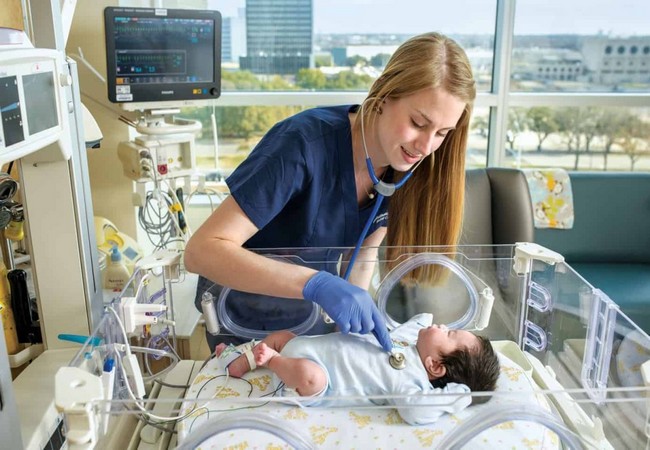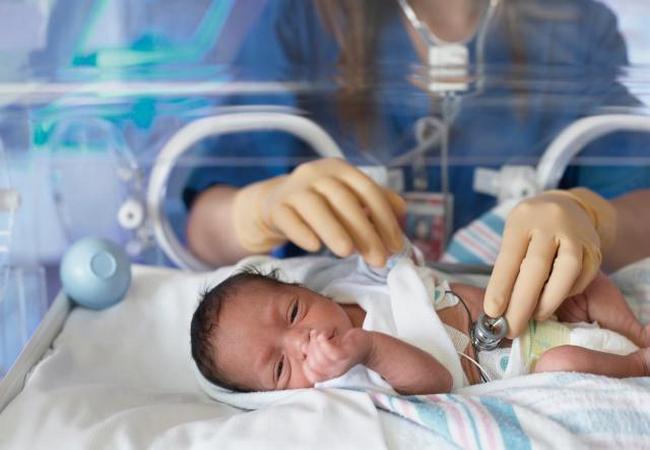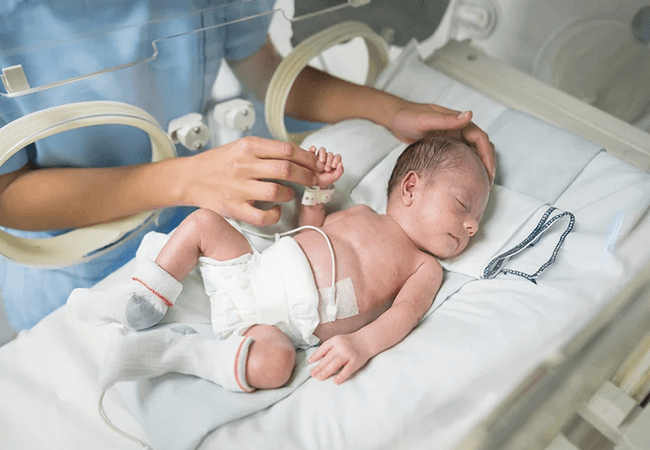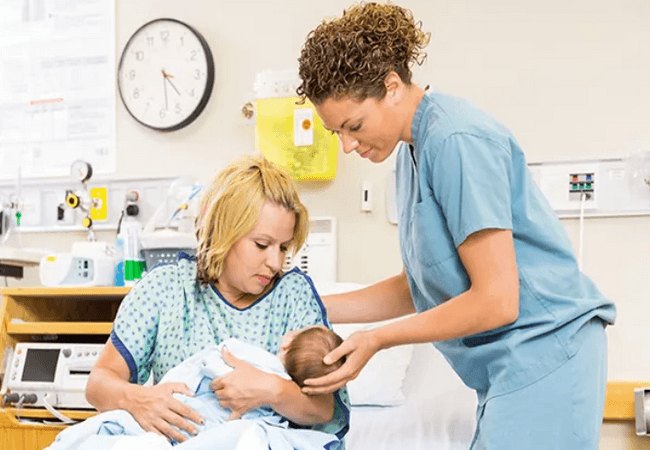Physical Examination or Assessment of Unwell Newborn or Neonate
Examination of Unwell Newborn or Neonate:
The initial assessment of an unwell child includes the paediatric assessment triangle: appearance, breathing and circulation to skin; primary survey that focuses on basic life support, patient assessment and immediate management; secondary survey with a detailed history of the event and physical examination; and ongoing assessment. Medical practitioners and their clinic staff must be prepared to undertake initial emergency management of a seriously ill child, and they must have the equipment and supplies available to carry out that management effectively.
You can read: How to Assess a High Risk Newborn or Neonate?

Examination of Unwell Newborn or Neonate:
a. Assessment of the skin of a newborn:
The skin of all babies to be examined for the followings –
- Pallor (pale, mottled appearance indicating poor perfusion).
- Plethora (beetroot colour indicating excess of circulating red blood cells).
- Cyanosis: central cyanosis always requires immediate attention.
- Jaundice: early jaundice is abnormal.
- Skin rashes such as milia, miliaria, mongolian blue spots and bruising and erythema toxicum.
Infectious lesions e.g. Thrush, herpes simplex virus, umbilical sepsis, bullous impetigo.
b. Abnormal body temperature of a newborn:
The normal body temperature range for term infants is 36.5-37c rectally (core temperature). Abnormal body temperature includes –
1. Hypothermia:
A core temperature below 36c is term as hypothermia which can indicate respiratory distress, hypoglycemia and sepsis.
2. Hyperthermia:
An axillary temperature above 37.5 c is considered hyperthermia the usual hyperthermia is due to overheating of the environment but it can also be a sign of sepsis, brain injury or drug therapy.
c. Assess respiratory system of a newborn:
Respiration to be counted by watching the lower chest and abdomen rise and fall for a full minute. Rate of respiration will vary between levels of activity. The chest should expand symmetrically.
You can read: How to Identify High Risk Newborn | Newborn Danger Signs
Abnormalities to look for include the following:
- Unilateral chest expansion and diminished breath sounds on one side.
- Tachypnoea (rate above 60/minute).
- Ketraction (inspiratory pulling in of the chest wall above and below the sternum or between the ribs).
- Nasal flaring.
- Grunting; an abnormal expiratory sound.
- Apnoea, cessation of breathing for 20 seconds or more.
d. Assess a newborn for cardiovascular abnormalities:
The normal heart rate of a term newborn is 120 to 160 beat / minute and of a preterm infant is 130 to 170 beat/minute.
Cardiovascular abnormalities:
- Cardiovascular dysfunction should be suspected in infants who present with lethargy and breathlessness during feeding. Other signs include- Slowness with feeds and pale at times or fast labored breathing.
- Infant who appear breathless with little or no rib recession and no grunting may have heart disease. Presence of a murmur heard on routine examination may be suggestive of an underlying cardiac lesion.
e. Assessment of a baby’s heart:
- Begin by recording pulse rate, rhythm, strength and character.
- Check for central perfusion; capillary refill time should be less than two seconds.
- Palpate and percuss the anterior chest wall for heart size and the site and nature of the apex beat.
- Also determine the presence of any thrill.
- Listen to the first heart sound, then the second heart sound, then the sounds between these and then any murmurs between heart sounds.
- Note the timing, character, loudness, site and distribution of any murmur.
- Chock if this is transmitted to the neck.
If disease of the heart or kidney is suspected, record blood pressure.
You can read: Classification or Types of High Risk Newborn or Neonates
f. Infant/ newborn assessment for insufficient lactation:
Possible signs of insufficient lactation in the exclusively breastfeeding infant in the first month after such as-
- Low urination pattern: at least six wet diapers is the norm.
- Low stooling frequency: at least three greenish-yellow, seedy, soft stools is the norm.
- Very irritable or sleepy infant, nursing less than seven times a day.
- Weight loss of more than i\vo of the birth weight or continued weight loss after day 10 of life.
Assessment Procedure of a Baby’s Heart:
It includes the following:
- Explain what you wish to do, and obtain informed consent from the mother.
- Examine the baby when he is quiet-using the time when he is awakening.
- Observe his colour and respirations.
- Aim for minimal disturbance, removing the baby’s clothing gently, ensuring that he is kept warm.
- Identify the apex of the heart.
- Warm the paediatric stethoscope head, and apply this to the chest.
- After five seconds (allowing the baby to settle) count the heart rate.
- Listen for 30 full seconds to the rate (speed), rhythm – whether the heart rate sounds even with no additional beats.
- Make a note of the heart rate, and record it in the baby’s notes.
- Explain to the mother what you have heard, and confirm whether any further action will be required.











